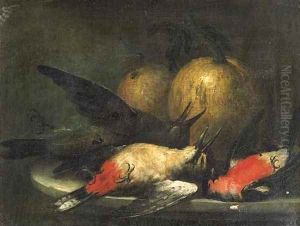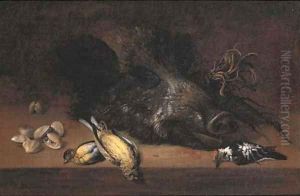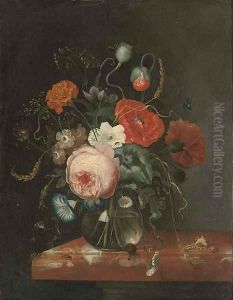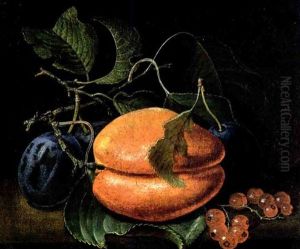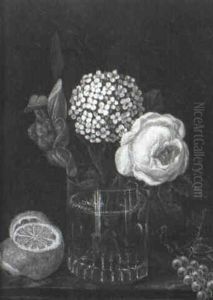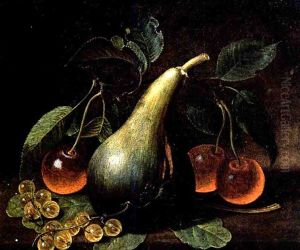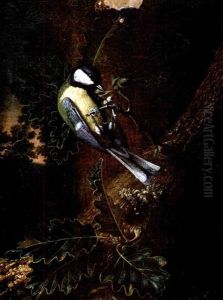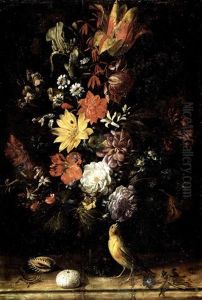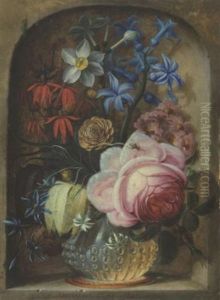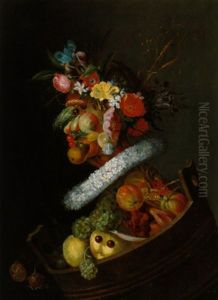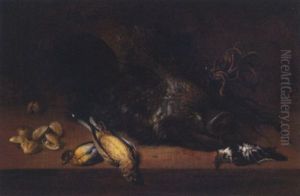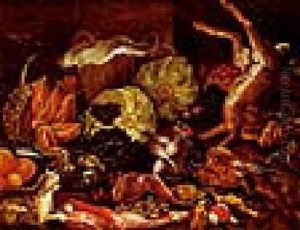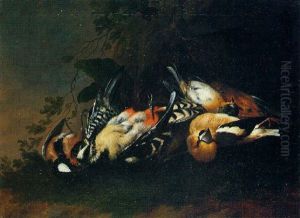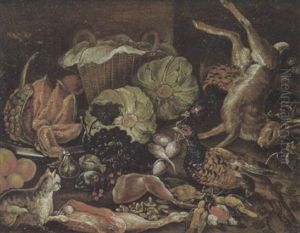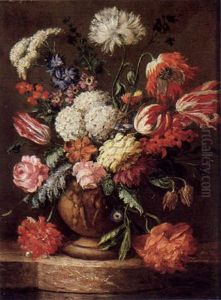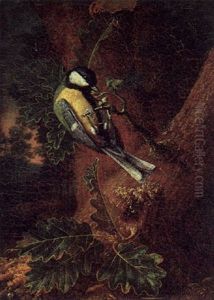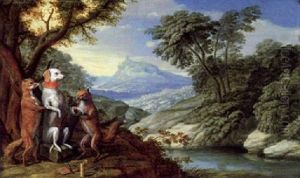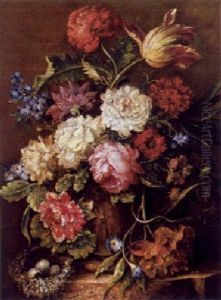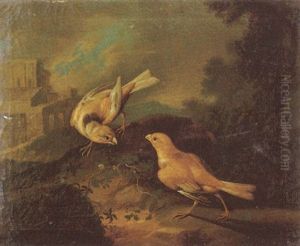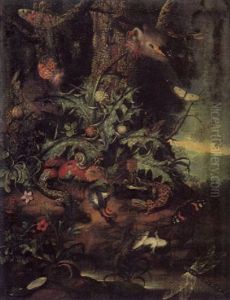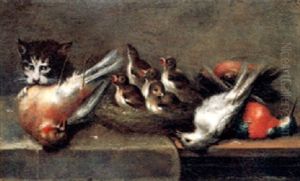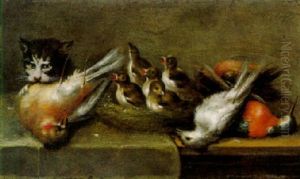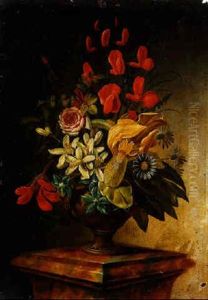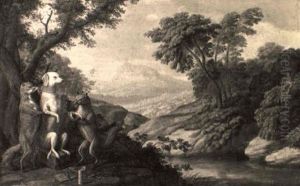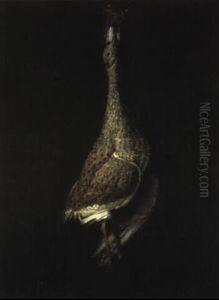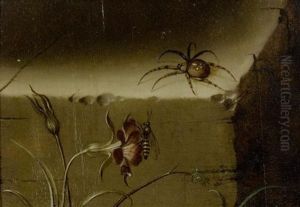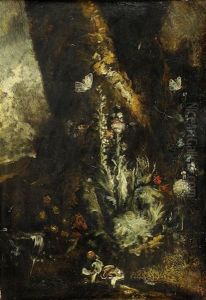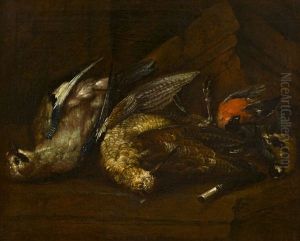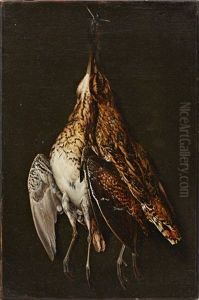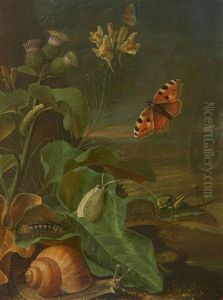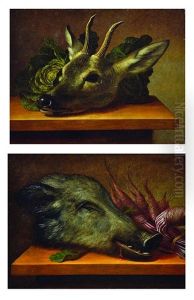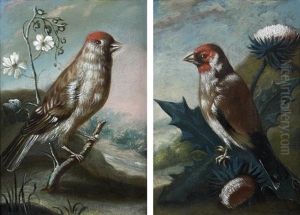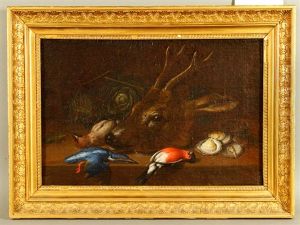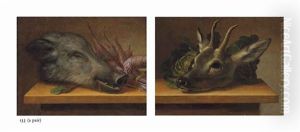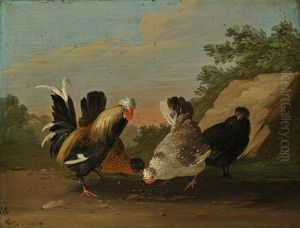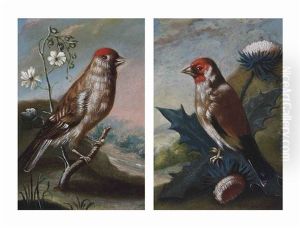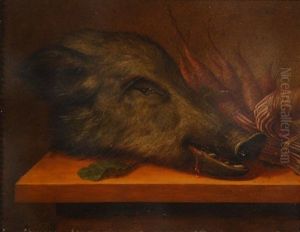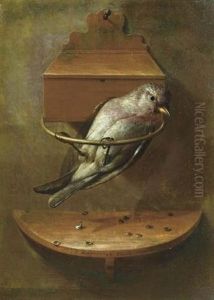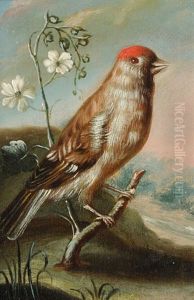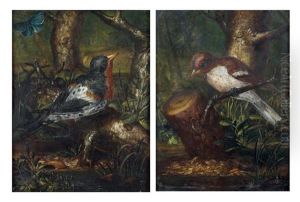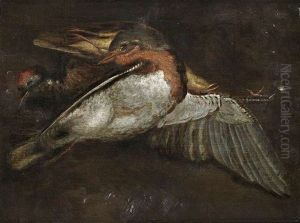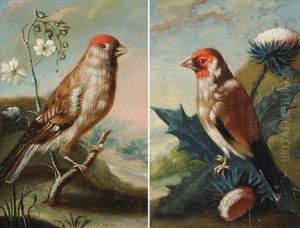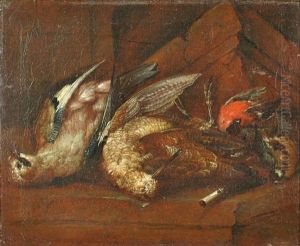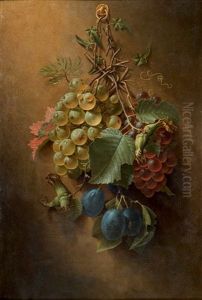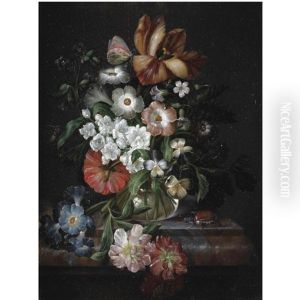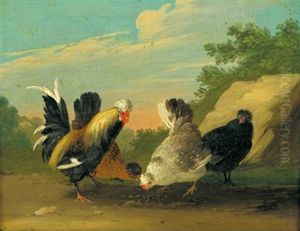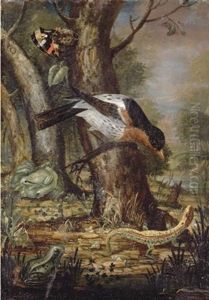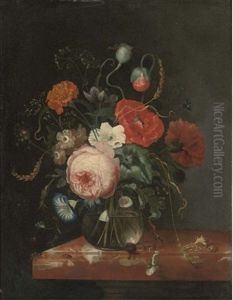Johann Adalbert Angermayer Paintings
Johann Adalbert Angermayer was a relatively lesser-known Baroque painter from the Austro-Bohemian region, born in 1674. His life and career were contemporaneous with a period in art history that was characterized by dramatic expression, grandeur, and the use of bold colors and contrasts, typical of the Baroque style that flourished in Europe during the 17th and 18th centuries. While there is limited documentation on Angermayer's personal life and training, it is known that he was active during the early 18th century, a time when the Habsburg Monarchy was a significant patron of the arts.
Angermayer's body of work includes religious compositions, which was a prevalent theme for artists of his era due to the influence of the Catholic Church and the Counter-Reformation, which sought to reaffirm Catholicism's dominance through visual arts among other means. His paintings often featured biblical scenes, saints, and figures from Christian iconography, executed with a focus on dramatic lighting and emotional intensity, aiming to inspire piety and devotion in viewers.
Despite his contributions to the Baroque art scene, Angermayer did not gain the same level of fame as some of his contemporaries. The reasons for this could be manifold, ranging from the possible provincial nature of his work, to being overshadowed by more prolific artists of the time, or simply due to the scarcity of surviving records or attributed works that could provide a clearer picture of his impact and standing among the artists of his time.
Johann Adalbert Angermayer passed away in 1740. While he is not a household name in the art historical canon, his works may still be of interest to scholars studying the regional manifestations of the Baroque style and the less-celebrated artists who contributed to the rich tapestry of European art history. Due to the limited information available about Angermayer's life and the potential for confusion with more prominent artists, it is advisable to approach research on him with caution and a critical eye for primary sources and provenance of artworks attributed to him.
